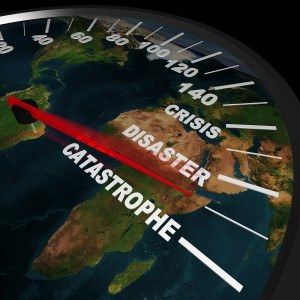Hurricane Dorian’s impact on the Caribbean will cause $1.5 billion to $3 billion in insured losses, according to an estimate from Verisk-owned catastrophe modeling firm AIR Worldwide.
 Modeled loss estimates include damage to onshore residential, commercial, and industrial properties and their contents, as well as automobiles; additional living expenses for residential properties; business interruption for commercial properties that experience physical loss from both direct and indirect sources; and storm surge.
Modeled loss estimates include damage to onshore residential, commercial, and industrial properties and their contents, as well as automobiles; additional living expenses for residential properties; business interruption for commercial properties that experience physical loss from both direct and indirect sources; and storm surge.
The AIR estimate does not include loss to offshore properties, pleasure boats, and marine craft; losses to infrastructure; losses from hazardous waste cleanup, vandalism, or civil commotion whether directly or indirectly caused by the event; demand surge; losses resulting from the compromise of levees or other existing defenses; losses to uninsured properties; or other non-modeled losses, including loss adjustment expenses.
Hurricane Dorian made landfall on St. Thomas on August 28 as a Category 1 hurricane and then tracked through the Virgin Islands. As AIR Worldwide noted, favorable conditions in the Caribbean Sea and Lesser Antilles fueled Dorian’s development, propelling the storm into a major Category 4 hurricane on August 31. Dorian reached Category 5 intensity on September 1, becoming the strongest hurricane to affect the northwestern Bahamas in the modern record.
Dorian began to drift northwestward on September 3, slowly gaining forward speed as it moved away from the Bahamas toward Florida but weakening on its way. The storm was a Category 2 hurricane off the eastern coast of Florida on September 3 and 4 as it continued northward. AIR Worldwide pointed out that Dorian will cause major impacts along the North and South Carolina coasts, but should weaken in response to increasing vertical wind shear.
Much of the Caribbean experienced little or no damage outside of the Bahamas. However, in the Bahamas, Grand Bahama and Abaco Island were devastated by Hurricane Dorian; buildings were destroyed, roofs were torn off, trees were felled, streets and homes were flooded, and cars, boats, and debris were strewn everywhere.
In related news, Karen Clark & Co. issued its own report on Hurricane Dorian loss impacts in the Bahamas, calculating total insured and uninsured losses of $7 billion, including building, contents and business interruption exposures for commercial, residential and industrial properties. Not included: infrastructure or auto losses.
Sources: AIR Worldwide, Karen Clark & Co.





















 California Workers Comp Combined Ratio for 2024 Highest in 20-Plus Years
California Workers Comp Combined Ratio for 2024 Highest in 20-Plus Years  Why ‘Good Enough’ Is Killing Insurance: The Hidden Cost of Satisficing
Why ‘Good Enough’ Is Killing Insurance: The Hidden Cost of Satisficing  Underwriter, Actuary Fears of AI Drop; Work Needed on Collaboration
Underwriter, Actuary Fears of AI Drop; Work Needed on Collaboration  Why the Middle Market Matters and How Insurers Can Capture It
Why the Middle Market Matters and How Insurers Can Capture It 








